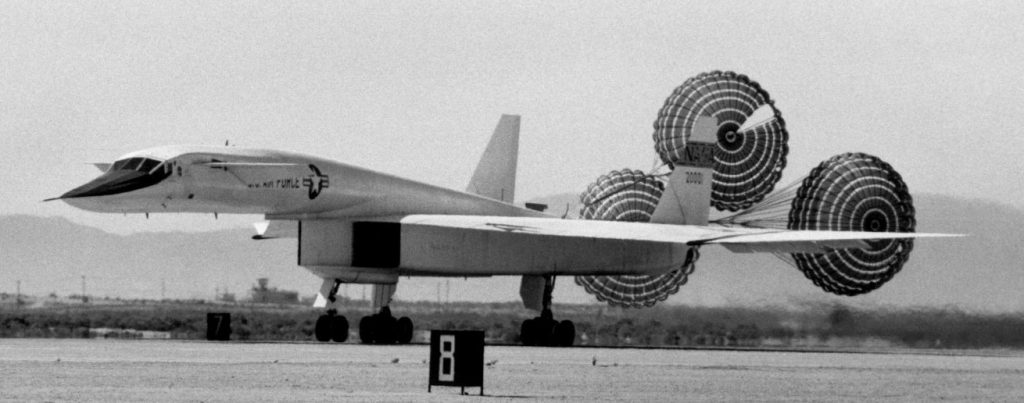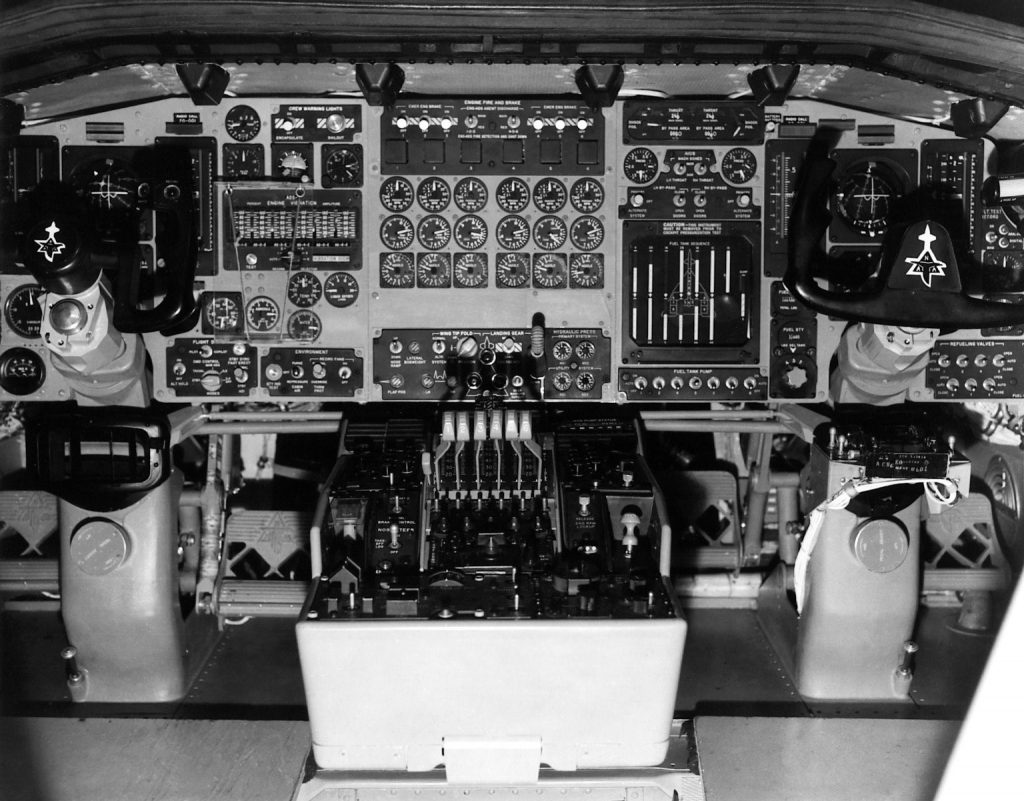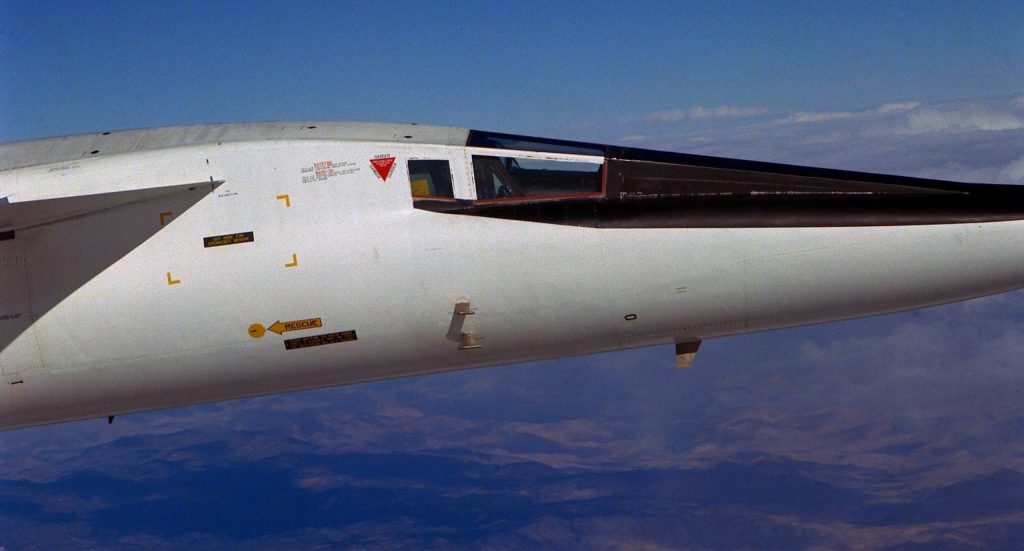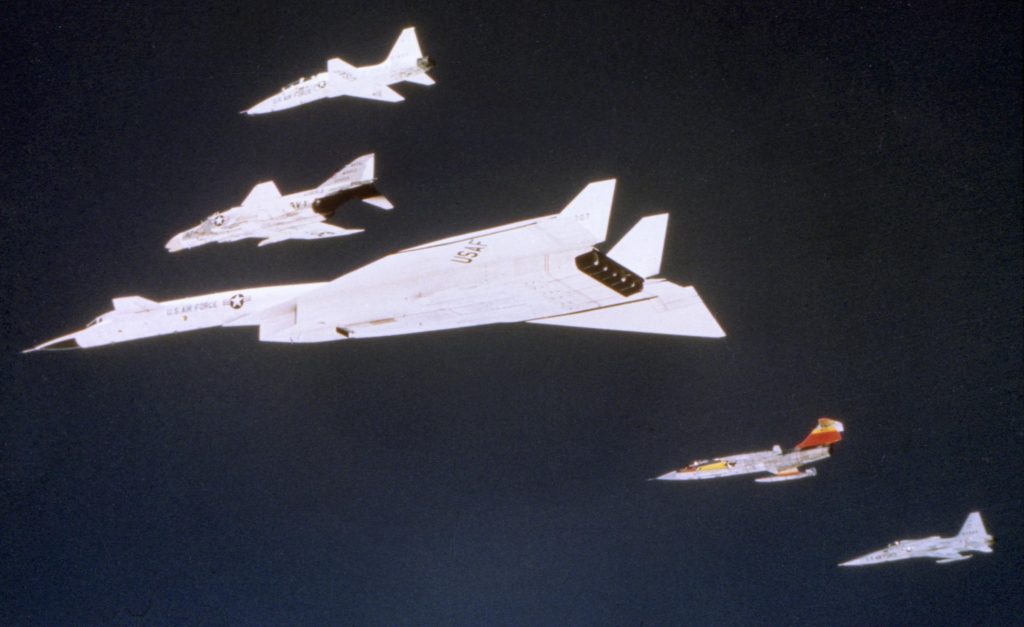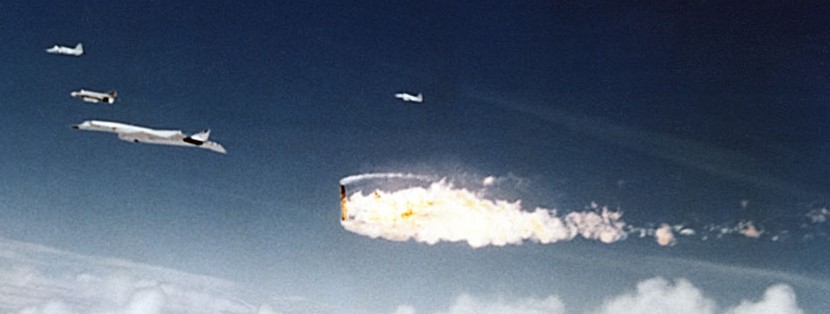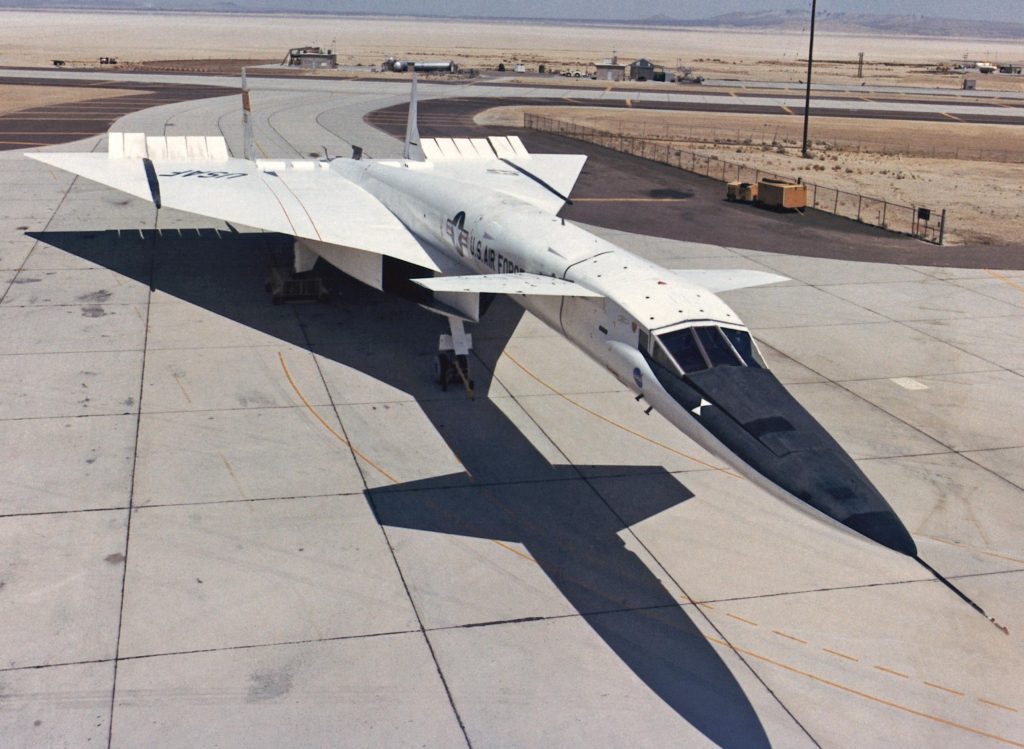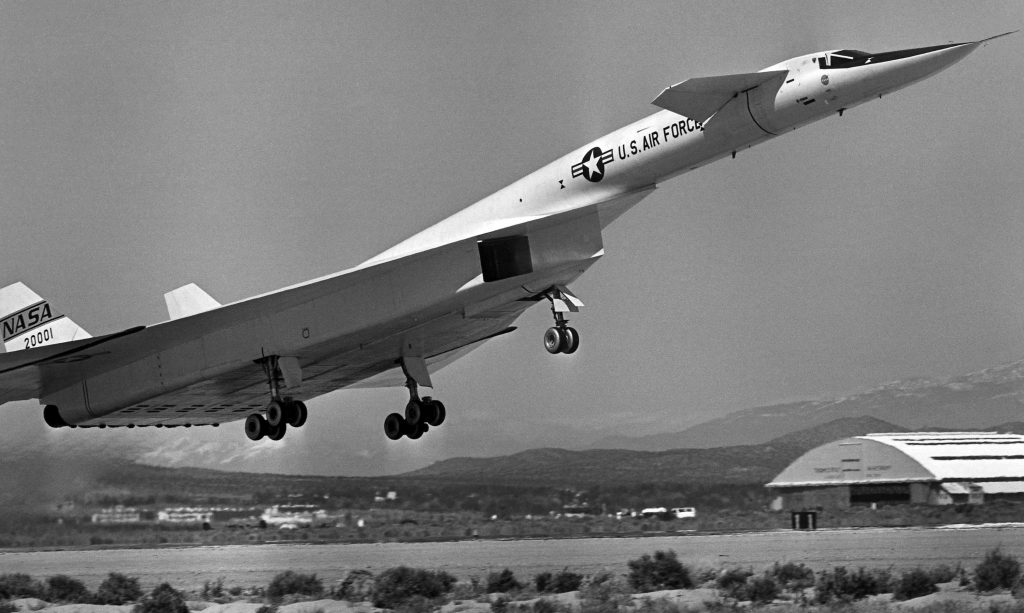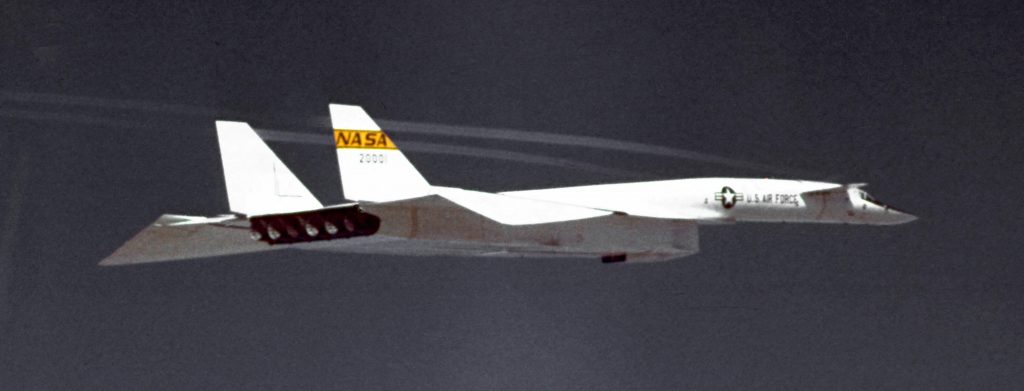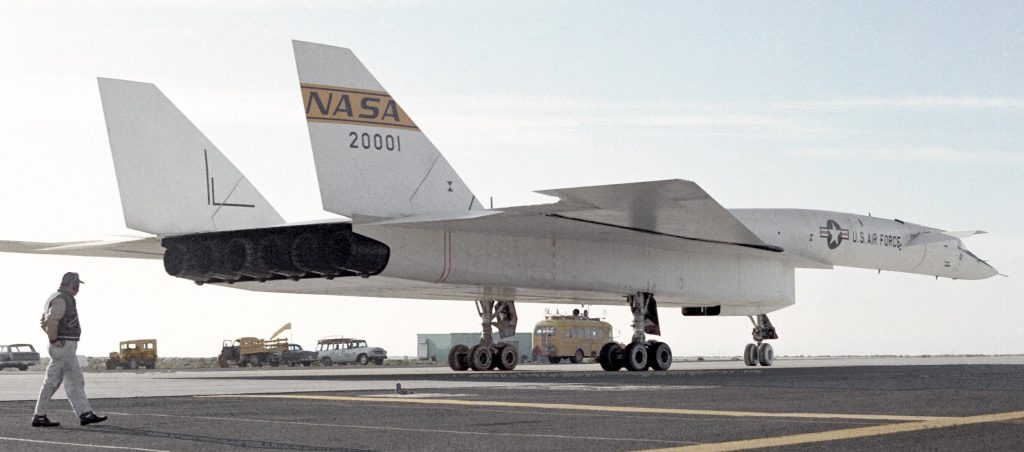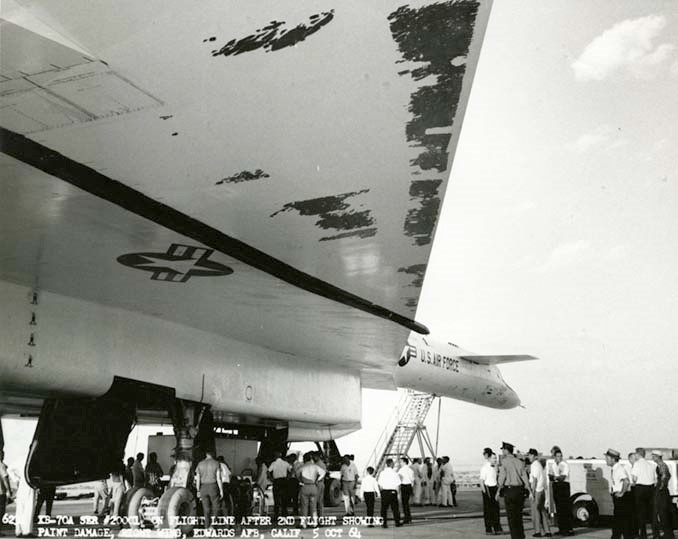 High Mach speed stripped the then standard thickness paint from the aircraft.
High Mach speed stripped the then standard thickness paint from the aircraft.
Silent NASA video of take-off from Edwards AFB, 1965:
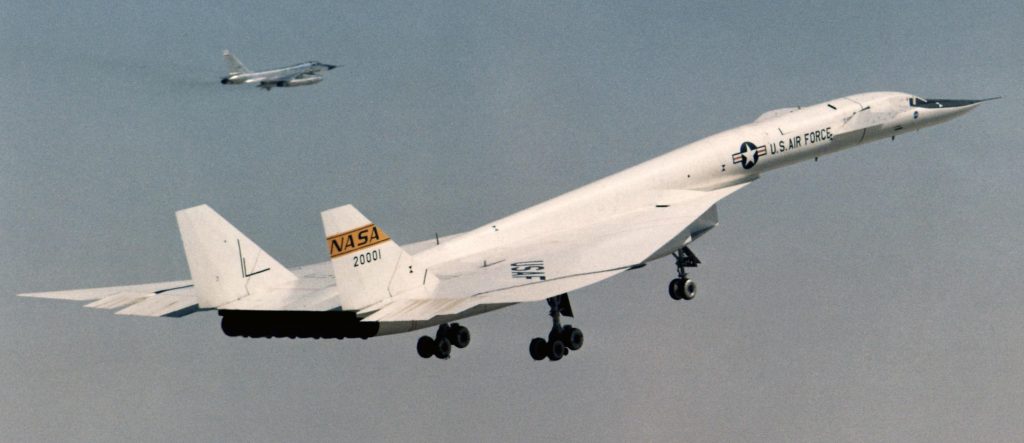
The original chase plane was a TB-58 Hustler. The trainer version of the Hustler bomber was fast and could keep up with the XB-70 by cutting inside the Valkyrie’s turns. NASA photo.
The 1st XB-70A (#62-001, tail #20001) taking off with TB-58 bomber-trainer acting as chase plane. The TB-58 could fly at Mach-2, but the XB-70A could hit Mach-3.
Silent NASA video of XB-70A landing at Edwards AFB in 1965:

The windshield could be raised to reduce drag.
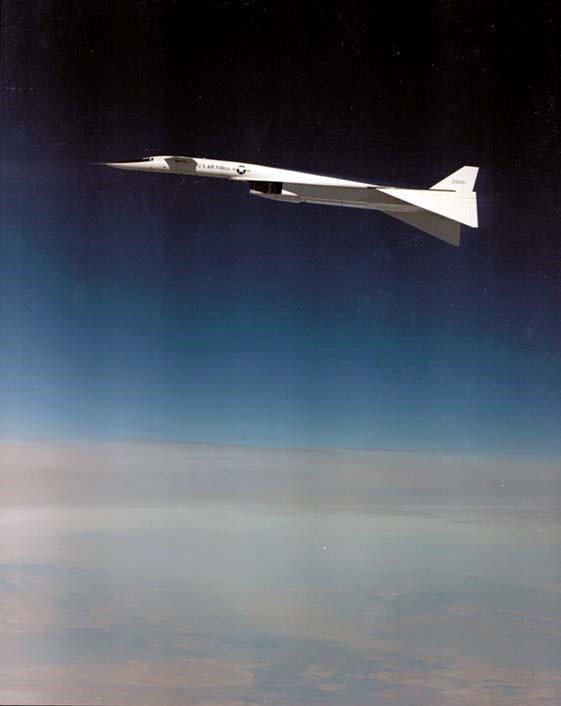
On 08JUN1966, the 2nd XB-70 (62-207) was destroyed in a high speed crash caused by a chase F-104N (with the orange & yellow tail) drifting into the Valkyrie’s right wing, flipping over the top of the Valkyrie, hitting the bomber’s vertical stabilizers and left wing. NASA says this photo was taken just before the collision.
It was suggested that the drooped wing tips created a vortex that sucked the F-104 into the XB-70. The F-104 pilot and the XB-70’s co-pilot were killed, the XB-70 pilot managed to eject. The other chase aircraft are T-38, F-4B and YF-5A.
The 1st Valkyrie went on to conduct more super-sonic research flights until replaced by the YF-12A.
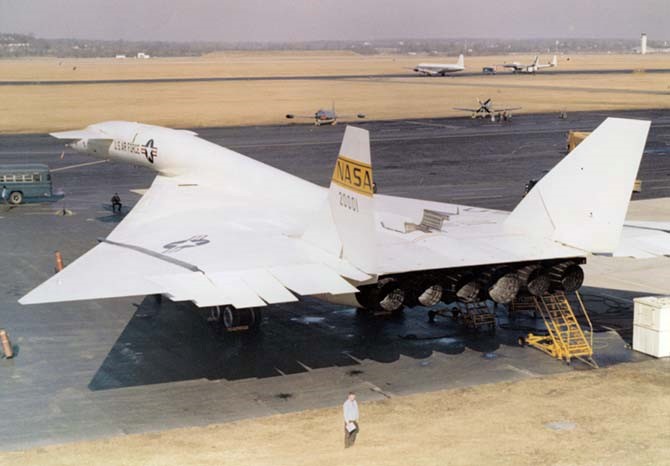 Valkyrie 20001 after arrival at Wright Patterson Air Force Base, February 1969.
Valkyrie 20001 after arrival at Wright Patterson Air Force Base, February 1969.
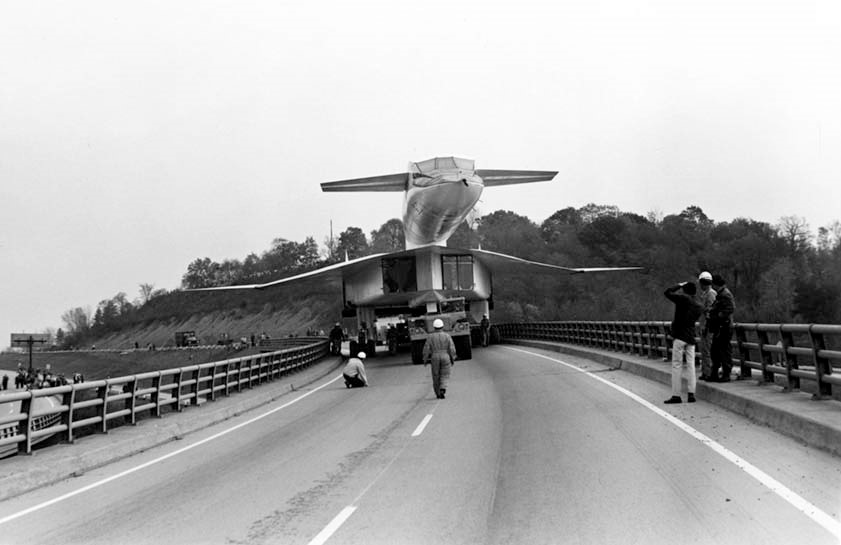 Being flown down the road to its retirement home known as a museum, 1971.
Being flown down the road to its retirement home known as a museum, 1971.
National Museum of the U.S. Air Force video explaining the XB-70:
NASA’S Russian Tupolev 144 SST
Bare Metal: NASA TRUCKS

